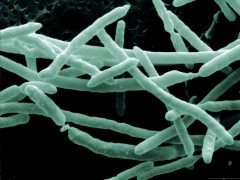 More than 2 billion people, or one-third of the world population, are infected with Mycobacterium tuberculosis. And, with the advances in molecular identification methods, some 200 species of mycobacteria have now been described. Many of these are prominent pathogens causing a variety of human diseases, from the classic pulmonary infections to tissue and wound infections and disseminated disease. Additionally, numerous environmental and recently identified mycobacterial species are responsible for a variety of mycobacterioses in humans.
More than 2 billion people, or one-third of the world population, are infected with Mycobacterium tuberculosis. And, with the advances in molecular identification methods, some 200 species of mycobacteria have now been described. Many of these are prominent pathogens causing a variety of human diseases, from the classic pulmonary infections to tissue and wound infections and disseminated disease. Additionally, numerous environmental and recently identified mycobacterial species are responsible for a variety of mycobacterioses in humans.
Laboratories play a critical role in diagnosis and control of mycobacterial infections and tuberculosis but still face numerous challenges, including:
- Sufficient funding and specialized training for sensitive and fast identification methodologies. In particular, inadequate laboratory infrastructure has hampered the response to the diagnostic challenges of HIV-associated and drug resistant tuberculosis. As a result of critical gaps in laboratory capacity, only an estimated 7% of multi-drug resistant tuberculosis (MDR-TB) are being detected globally, and even less for extensively drug-resistant cases (XDR-TB).
- Difficulty in meeting the 24-hour turnaround time for acid-fast bacillus (AFB) smear results. Daily processing of specimens can be extremely expensive, depending on the number of samples submitted per day.
- Adequate sensitivity of nucleic acid-based tests for diagnosis of latent or low-level infections. The tests that are available are indicated for direct detection in smear positive samples or positive cultures only.
- Availability and acceptable specificity of nucleic-acid based tests for nontuberculous mycobacteria (NTM). Few tests are available for NTM and are typically laboratory-developed.
How has your laboratory addressed the challenges in diagnosis of mycobacteria? What more is needed?